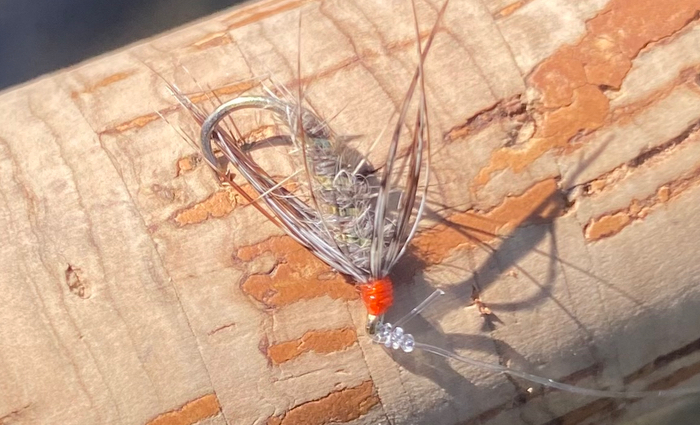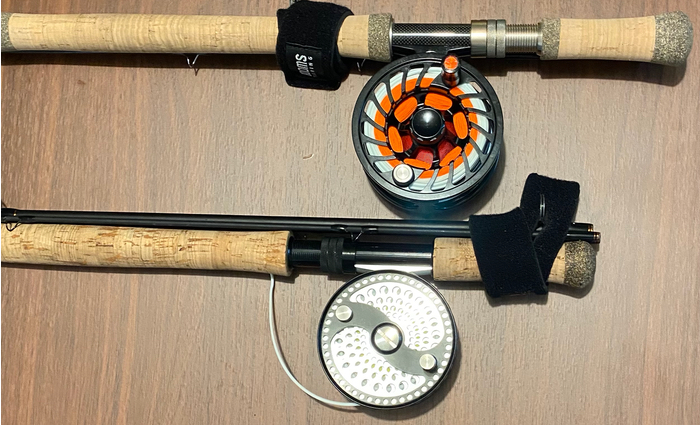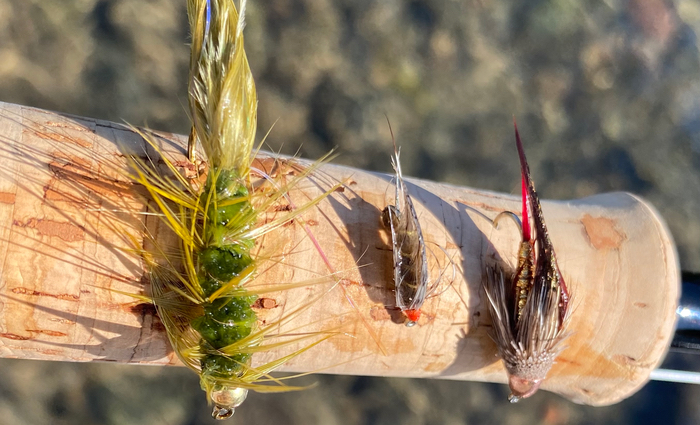
Trout Spey Fly Fishing Adventure on the Lower Deschutes
Trout Spey Deschutes River is a fantastic technique for big Redside Trout. What is Trout Spey? It is the perfect technique for trout anglers looking to add some versatility and excitement to their fly fishing experience. With lightweight, two-handed rods, Trout Spey allows for effortless casting and better line control, making it ideal for swinging flies in rivers and streams. When it comes to popular Trout Spey rod models and brands, you can’t go wrong with options like the Sage Trout Spey HD or the Redington Dually Trout. As for the best Trout Spey lines, consider a combination of running lines and Trout Spey heads for ultimate control and flexibility. Alternatively, an integrated line can offer convenience and simplicity. When deciding on the right Trout Spey grain weights, it’s important to consider factors like casting distance, fly size, and overall fishing conditions. So gear up, embrace the thrill of Trout Spey, and embark on an unforgettable fly fishing adventure on the Lower Deschutes.
The Ultimate Trout Spey Rods for Unforgettable Fly Fishing Adventures

Sage Trout Spey HD
TROUT SPEY HD 3110-4
We like eleven-foot, three-weight trout spey rods, and Sage makes a lovely premium rod. Integrated trout spey lines allow anglers to strip streamers without bulky running lines to the head junction. Keeping fly fishing simple is a key to success, and we love Scientific Anglers Speylite Integrate Skagit lines. A 250gr to 275gr is an excellent option. We will cover grains, tips, and lines below.
G Loomis Trout Spey
IMX-PRO FLY V2 3111-4
Another great choice is the eleven-foot, one-inch, three-weight trout spey rod for the Lower Deschutes River by G Loomis. We suggest the same line weights and styles.
Maxcatch Trout Spey Rods
If you are new to fly fishing and want to try Trout Spey, Maxcatch has a great selection of rods and reels at discounted prices. We don’t want to chase off potential fly anglers with sticker-shock prices. We do not make any money nor is this an affiliate website. We are giving you our opinions based on guiding success on the Lower Deschutes River.

Trout Spey Fly Line Grain Weights: Finding the Perfect Balance
When it comes to Trout Spey fly lines, finding the right grain weight is crucial for a successful and enjoyable fishing experience. The grain weight of your fly line determines how it casts, how it handles different fly sizes, and how it performs in various fishing conditions.
To ensure maximum control and flexibility, consider factors such as casting distance, fly size, and overall fishing conditions when choosing your Trout Spey fly line grain weight. Whether you’re throwing big streamers with a heavy sink tip or swinging soft hackles, the right grain weight will make all the difference.
Scandi vs Skagit Trout Spey Lines: Exploring the Differences
Discover the nuances that set Scandi and Skagit Trout Spey lines apart and enhance your fly fishing experience.
As anglers, we know that finding the perfect Trout Spey line is key to achieving optimal casting, handling various fly sizes, and adapting to different fishing conditions. Scandi and Skagit Trout Spey lines offer distinct advantages, allowing you to tailor your approach to meet your specific needs on the water.
Scandi Trout Spey lines excel in presenting delicate, light flies with refined precision. These lines offer graceful, effortless casts, making them ideal for situations that require finesse and subtlety. With their longer, more gradual tapers, Scandi lines provide superb control and delicate presentations, perfect for swinging soft hackles or dry flies.
On the other hand, Skagit Trout Spey lines are designed for power and versatility. These lines handle heavier flies and sink tips with ease, making them a great choice for throwing big streamers or dealing with challenging conditions. Skagit lines feature shorter, more aggressive tapers, allowing for powerful casts and enhanced line control.
When selecting your Trout Spey line, consider factors like casting distance, fly size, and overall fishing conditions. Whether you prefer the finesse and precision of a Scandi line or the power and versatility of a Skagit line, choosing the right grain weight for your specific needs is crucial.
Gear up, embrace the thrill of Trout Spey, and unlock new possibilities on the water. Join us on the Lower Deschutes River for an unforgettable fly fishing adventure. Let Deschutes River Fly Fishing Guides be your trusted source for all things Trout Spey. Follow us for more information and discover the best spots for Trout Spey fishing.
Remember, the right line can make all the difference in your pursuit of trout on the fly. Experience the magic of Scandi and Skagit Trout Spey lines and take your fishing to new heights.
Great Trout Spey Lines and Sink Tips for the Lower Deschutes River
Scientific Anglers make Trout Spey lines and sink tips very easy for neophytes and seasoned fly anglers. We swing soft hackles and streamers on Skagit Lines. Once again, it simply works for us and our clients. We carry three tips when trout spey fishing the Lower Deschutes River. Ten-foot SA Sonar sink tip leaders are all 50 grains. Float, hoover, intermediate, sink 3, and sink 6; put big fish in the net. We carry the float, sink 3, and sink 6, which seem to cover 99% of all trout fishing situations on the Lower Deschutes River. Unless you have an 11’6″ or 12′ trout spey rod in 4-5 weight, casting ten feet of T8 is cumbersome.
Trout Spey Deschutes River-Sink Tips 101
Looking to understand the difference between tungsten and poly leader sink tips? Look no further. Tungsten sink tips are made from a denser material, allowing them to sink faster and deeper in the water. They are ideal for fishing in fast-moving rivers or deep pools where you need to get your fly down quickly. On the other hand, poly leader sink tips are made from a lighter material and have a slower sink rate. They are great for fishing in slower currents or when you want your fly to have a more natural, slower descent. Whether you choose tungsten or poly leader sink tips, both offer unique advantages depending on your fishing conditions and preferences.
Discover the perfect grain weights for your fly fishing endeavors. The T8, T14, and T20 options weigh 96 grams, 136 grams, and 160 grams respectively, over ten feet. For a ten-foot poly leader, choose between the versatile float, hoover, intermediate, sink 3, or sink 6, each weighing 50 grams. These grain weights offer exceptional control and adaptability to meet your specific fishing needs. Enhance your understanding of sink tips by exploring the differences between tungsten and poly leader options in our comprehensive Sink Tips 101 guide. Eleven foot three weight trout spey rods are difficult to cast ten feet to T8 and a heavy fly. Try RIO 10ft replacement tips in five or six weights or the SA Sonar tips. Remember, simple is much better.
Tippet is your only other decision to make. You can find experts who endorse fluorocarbon leader material because it sinks and vanishes in the water. We use it and have confidence in it for flies that need to sink. Trout Spey techniques induce big trout and shocking strikes. Eight and even ten-pound leader is a great idea. The simple option is good old Maxima Chameleon leader in 10, 8, and 6-pound tests. Trout Spey and streamer flies are covered in another blog post.

0 Comments
Trackbacks/Pingbacks